|
Like a mirage, dazzling white sand dunes shimmer in the tucked-way Tularosa Basin in southern New Mexico. They shift and settle over the Chihuahuan Desert, covering 275 square miles—the largest gypsum dunefield in the world. White Sands National Park preserves more than half of this oasis, its shallow water supply, and the plants and animals living here.
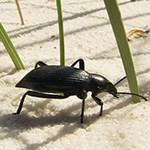
NPS Photo White Sands National Park has unusually harsh environmental conditions, even for the desert. But that hasn’t stopped animal species from adapting, surviving, and even thriving here. If you look closely, you can see their tracks in the sand to remind yourself of their presence. And while it may be hard to imagine, there are over 800 species of animals that call White Sands their home. 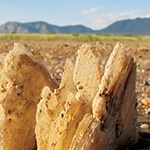
NPS Photo One of the most outstanding features of White Sands National Park is its unique geology. Without it, the white sands of New Mexico would not be here! 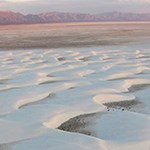
NPS Photo To the untrained eye, White Sands National Park can appear as a stark and desolate place, but in reality the park is composed of complex, interconnected ecosystems. Even the soil is teeming with life. Tiny organisms called cyanobacterium layer themselves into a woven mat that forms the top surface of the soil in the areas between dunes. Step lightly and keep your eyes open! You never know what you might see. 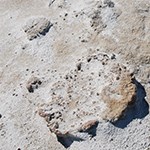
NPS Photo Thousands of years ago, giant animals roamed the shores of an ancient lake that covered what is now White Sands National Park. Columbian mammoths, giant sloths, and dire wolves stepped in the muddy banks of Lake Otero, leaving behind their footprints. Today evidence of the path they walked is preserved in the sediments of Alkali flat. Prints made of gypsum crystals, dolomite and sand are visible at the surface, and some tracks go on for two miles! 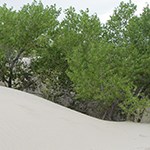
NPS Photo Plants play a critical role in the ecosystems of White Sands National Park, stabilizing the leading edges of the dunes and providing both food and shelter for wildlife. But it isn't easy eking out a living here in this harsh landscape! 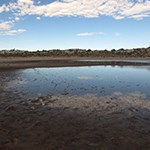
NPS Photo Environmental FactorsIt’s hard to imagine the Tularosa Basin without white sands. The sand covers approximately 275 square miles, but this is the result of a perfectly balanced ecosystem. We need just the right amount of rain, sun, groundwater, and wind. So, what happens if any part of this system is disrupted? Salt cedars can drink up to 200 gallons of water a day and will outcompete the native species. Additionally, if temperatures continue to increase and speed the rate of evaporation, the prevailing northeasterly winds that shape the dunes today could blow them all away. |
Last updated: August 21, 2020
